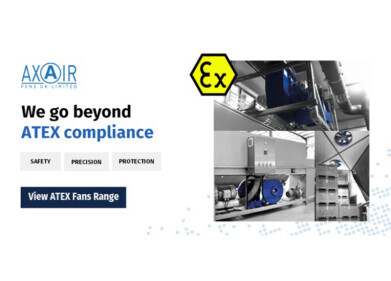Laboratory Products
The Importance of Selecting the Correct Furnace when Ashing
May 03 2022
Are you involved in executing the ashing process where prepared samples are heated in air until they react with the oxygen present and combust leaving residual ash of inorganic, non-combustible compounds?
Whether you are ashing to an international ISO, EN or ASTM standard or with a specific objective such as Loss on Ignition (LOI), a specialised Ashing Furnace is the most appropriate piece of equipment in which to carry out this process.
The difference between a standard laboratory chamber furnace and an ashing furnace is primarily the supply of preheated air to promote burning. Typically, an ashing furnace is designed to promote a high level of airflow through the chamber to aid sample combustion and remove the smoke created during processing. Incomplete combustion can lead to issues as highlighted in the video.
The air is guided through the furnace insulation assembly to ensure that it is pre-heated before entering the chamber; this reduces the risk of inadvertently lowering the temperature during processing. The increased airflow also serves to carry any smoke and volatiles from the chamber out of the exhaust. An optional afterburner or thermal catalytic oxidiser fitted to the exhaust can further reduce the emissions escaping into the surrounding atmosphere.
Because of the risk that exhaust fumes and volatiles emitted from samples could damage the heating elements, an ashing furnace is often fitted with silicon carbide (SiC) protection tiles that sit within the furnace chamber and provide a barrier between the samples and the heating elements.
In a smaller ashing furnace, the heating elements are wrapped around the outside of a ceramic muffle, into which samples are placed. The muffle contains the smoke and volatiles produced by the ashing process, whilst protecting the heating elements from contamination.
For tests or processes where alumina/silica dust could contaminate results, or react with the sample to produce corrosive vapours, a fused quartz chamber ashing furnace may be necessary to protect both the furnace and the process.
Digital Edition
Lab Asia 31.2 April 2024
April 2024
In This Edition Chromatography Articles - Approaches to troubleshooting an SPE method for the analysis of oligonucleotides (pt i) - High-precision liquid flow processes demand full fluidic c...
View all digital editions
Events
Apr 28 2024 Montreal, Quebec, Canada
May 05 2024 Seville, Spain
InformEx Zone at CPhl North America
May 07 2024 Pennsylvania, PA, USA
May 14 2024 Oklahoma City, OK, USA
May 15 2024 Birmingham, UK




.jpg)














